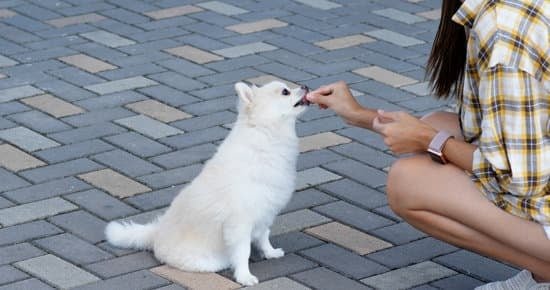Are you wondering how to train blue heeler dogs? Blue Heelers, also known as Australian Cattle Dogs, are a highly intelligent and energetic breed that require specific training methods to thrive. In this article, we will explore the unique characteristics of the Blue Heeler breed and provide valuable insight into effectively training and managing these energetic dogs.
The Blue Heeler breed is known for their intelligence, loyalty, and strong work ethic. Understanding their natural instincts and behavior patterns is crucial in order to successfully train them. From early socialization to advanced training techniques, this comprehensive guide will cover everything you need to know about training your Blue Heeler.
Whether you are a first-time owner or have experience with the breed, it’s important to recognize the significance of early socialization for Blue Heelers. This section will delve into the impact of socializing your dog from a young age and how it shapes their behavior as they mature. Additionally, we will discuss the importance of basic obedience training and explore advanced techniques for working and agility – all essential aspects in ensuring a well-behaved and fulfilled Blue Heeler.
The Importance of Early Socialization for Blue Heelers
Blue Heelers, also known as Australian Cattle Dogs, are an intelligent and active breed that requires early socialization to ensure they grow up to be well-adjusted and friendly dogs. Early socialization is crucial for Blue Heelers because it helps them develop good behavior and manners around people and other animals. It also helps to prevent any potential issues with aggression or fearfulness as they grow older.
Here are some key points to consider when socializing your Blue Heeler:
- Exposing them to different environments: Introduce your Blue Heeler puppy to different places, sounds, and experiences from a young age. This can include walks in the park, visits to the pet store, car rides, and meeting new people and animals.
- Positive interactions with people and animals: Encourage positive interactions with a variety of people, including children, adults, and strangers. Similarly, allow them to interact with other well-behaved dogs to help them learn appropriate social behavior.
- Training classes: Enrolling your Blue Heeler in puppy training classes can provide structured socialization opportunities and also help with basic obedience training. These classes can also be a great way for your dog to learn how to behave around other dogs in a controlled environment.
Early socialization sets the foundation for a well-behaved and well-adjusted Blue Heeler. With proper socialization, you can help your dog become more confident and adaptable in various situations as they mature.
A well-socialized Blue Heeler is more likely to have positive interactions with people and other animals throughout their life. By understanding the importance of early socialization for Blue Heelers, you can ensure that your furry companion grows up to be a happy, well-behaved member of your family.
Basic Obedience Training for Blue Heelers
Blue Heelers are known for their intelligence and high energy levels, making them a breed that thrives on obedience training. Basic obedience training is essential for Blue Heelers to ensure they develop into well-behaved and well-adjusted companions. Here are some key guidelines on how to train Blue Heeler dogs in basic obedience:
1. Start Early: Begin training your Blue Heeler as soon as you bring them home. Early training helps establish good behavior patterns and prevents the development of bad habits.
2. Use Positive Reinforcement: Positive reinforcement, such as treats, praise, and rewards, is highly effective in training Blue Heelers. It motivates them to learn and obey commands willingly.
3. Teach Basic Commands: Focus on teaching fundamental commands like sit, stay, come, heel, and down. Consistency is key in reinforcing these commands until they become second nature to your Blue Heeler.
4. Leash Training: Blue Heelers are an active breed that needs regular exercise, so leash training is essential for controlling their energy during walks. Introduce leash training early and be consistent with expectations.
5. Socialization: While not specifically part of obedience training, socializing your Blue Heeler from an early age is crucial for their overall behavior and manners around other dogs and people.
Remember that every dog is unique and will progress at their own pace during training. Patience, consistency, and positive reinforcement will go a long way in effectively training your Blue Heeler in basic obedience skills.
Advanced Training Techniques for Working and Agility
Blue Heelers are known for their intelligence, agility, and strong work ethic. These traits make them excel in advanced training for working and agility. Whether you want to train your Blue Heeler for herding, obedience trials, or agility competitions, there are specific techniques that can help harness their natural abilities and drive.
Herding Training
Blue Heelers were originally bred for herding livestock, so it’s no surprise that they have a strong herding instinct. To train your Blue Heeler for herding, it’s essential to tap into this instinct while also teaching them to respond to your commands. Enrolling in herding classes or working with a professional trainer who has experience with herding dogs can be beneficial. It’s crucial to provide mental stimulation and regular practice sessions to keep their herding skills sharp.
Agility Training
Blue Heelers thrive in agility training due to their high energy levels and athleticism. Agility training helps them channel their energy into a positive activity while strengthening the bond between the dog and the owner. When training your Blue Heeler for agility, start with basic obstacles and gradually progress to more challenging courses. Positive reinforcement is key in agility training, as it motivates the dog to perform at their best.
Working Trials
Apart from herding and agility, Blue Heelers can also excel in various working trials such as obedience trials, search and rescue, or scent work. These activities not only provide physical exercise but also mental stimulation for the highly intelligent Blue Heelers. Utilizing their problem-solving abilities, these trials can be a fulfilling way to engage your Blue Heeler’s mind while honing their skills.
When training Blue Heelers for advanced working and agility tasks, consistency is vital. It’s essential to tailor the training techniques based on the individual personality and strengths of each dog while always using positive reinforcement methods. With patience, dedication, and understanding of the breed’s instincts, owners can unlock the full potential of their Blue Heeler companions in these advanced activities.
Tips for Managing the High Energy Levels of Blue Heelers
Blue Heelers are known for their high energy levels and need for physical and mental stimulation. It is important to understand that this breed was originally bred for herding cattle, so they have a natural instinct to be active and alert. Without proper outlets for their energy, they can become bored, anxious, and even destructive. One of the most effective ways to manage the high energy levels of Blue Heelers is through regular exercise.
To effectively manage the energy levels of Blue Heelers, it is recommended to engage in at least 60-90 minutes of vigorous exercise daily. This can include activities such as running, hiking, or playing fetch. Mental stimulation is also crucial for this intelligent breed, so consider incorporating puzzle toys or training exercises into their daily routine.
In addition to physical exercise, another important aspect of managing a Blue Heeler’s energy is providing them with a job or purpose. These dogs thrive when they have a task to complete, whether it be learning new tricks, participating in dog sports such as agility or obedience trials, or even simply having a job around the house like fetching the mail.
By keeping them physically and mentally engaged, you can help ensure that their high energy levels are channeled in positive ways.
| Blue Heeler Exercise Requirements | 60-90 Minutes of Vigorous Exercise Daily |
|---|---|
| Mental Stimulation | Incorporate puzzle toys or training exercises into their daily routine |
| Providing Purpose | Dog sports such as agility or obedience trials can provide them with a task |
Using Positive Reinforcement in Training Blue Heelers
The key to successful training for Blue Heeler dogs is using positive reinforcement techniques. This approach focuses on rewarding desirable behaviors to encourage their repetition, rather than punishing unwanted behaviors. Positive reinforcement is especially effective with this breed, as they are known for their intelligence and strong work ethic. Here’s how to train Blue Heeler dogs using positive reinforcement.
Understanding the Principles of Positive Reinforcement
Positive reinforcement involves rewarding your Blue Heeler with something they enjoy, such as treats, toys, or praise, whenever they display the desired behavior. It creates a positive association in their mind and motivates them to continue performing the behavior in order to receive the reward. It’s important to be consistent in applying positive reinforcement and to deliver the reward immediately after the behavior occurs, so that your Blue Heeler understands what they are being rewarded for.
Implementing Positive Reinforcement in Basic Obedience Training
When training your Blue Heeler in basic obedience commands such as sit, stay, and come, use plenty of treats and verbal praise to reinforce their good behavior. For example, when teaching your dog to sit, gently guide them into the sitting position while saying “sit”, then immediately give them a treat and praise them enthusiastically. Repeat this process consistently until they understand the command and reliably perform the behavior.
Using Positive Reinforcement in Advanced Training
Positive reinforcement can also be applied to advanced training techniques for working and agility with Blue Heelers. When teaching them more complex tasks or skills, rewards can be used strategically to encourage progress and maintain their motivation. For example, when training them to herd livestock or navigate an agility course, you can use treats or toys as a form of positive reinforcement when they successfully complete a task or obstacle.
By utilizing positive reinforcement methods in training your Blue Heeler dogs, you can effectively motivate them to learn new skills and behaviors while creating a strong bond based on trust and mutual respect. This approach not only helps shape their behavior but also contributes to a happy and harmonious relationship between you and your furry companion.
Dealing With Common Behavior Issues in Blue Heelers
Blue Heelers, also known as Australian Cattle Dogs, are intelligent and hard-working dogs that are commonly used for herding livestock. However, their high energy levels and work-oriented nature can sometimes lead to certain behavior issues. It is important for Blue Heeler owners to be aware of these issues and know how to address them effectively.
One common behavior issue in Blue Heelers is their tendency to become territorial and protective. This can manifest as excessive barking, growling, or even aggression towards strangers or other animals. To address this issue, early socialization is crucial. Exposing your Blue Heeler to a wide variety of people, animals, and experiences from a young age can help reduce their tendency towards territorial behavior.
Another behavior issue that Blue Heeler owners may encounter is their stubbornness and independence. While these traits can be beneficial when it comes to working with livestock, they can make basic obedience training more challenging. To overcome this issue, it is important to use positive reinforcement techniques such as rewarding good behavior with treats or praise. Consistency and patience are key when training Blue Heelers, as they respond best to clear and consistent commands.
In addition to territorial behavior and stubbornness, separation anxiety is another common issue that Blue Heeler owners may face. These dogs form strong bonds with their owners and can become distressed when left alone for extended periods of time. To address this issue, it’s important to gradually acclimate your Blue Heeler to being alone through crate training and desensitization exercises.
| Behavior Issue | Training Tip |
|---|---|
| Territoriality | Early socialization |
| Stubbornness | Positive reinforcement techniques |
| Separation Anxiety | Gradual acclimation through crate training and desensitization exercises |
The Role of Exercise in Training and Keeping Blue Heelers Happy and Healthy
In conclusion, it is crucial to understand the unique characteristics and traits of Blue Heeler dogs in order to effectively train and manage their behavior. Early socialization plays a significant role in shaping a Blue Heeler’s temperament and behavior, so exposing them to various people, animals, and environments from a young age is key. Basic obedience training is essential for establishing boundaries and building a strong foundation for more advanced training techniques such as working or agility activities.
When it comes to managing the high energy levels of Blue Heelers, regular exercise is paramount. These dogs are bred to be active and require plenty of physical and mental stimulation to prevent boredom and destructive behaviors. Incorporating activities like running, hiking, agility courses, or even herding exercises can help satisfy their natural instincts and keep them happy.
Using positive reinforcement techniques in training Blue Heelers can also yield great results. Reward-based methods not only encourage good behavior but also strengthen the bond between the owner and dog. Additionally, being consistent, patient, and offering plenty of praise during training sessions can go a long way in effectively teaching Blue Heelers how to behave.
Overall, understanding the specific needs of the Blue Heeler breed is essential for successful training. By providing early socialization, implementing positive reinforcement techniques, managing their high energy levels through regular exercise, and addressing any behavior issues that may arise with patience and consistency-owners can ensure that their Blue Heelers are well-trained, happy, and healthy companions.
Remember that every dog is unique so finding what works best for your individual pet may take time – consider seeking professional help if you encounter difficulties during the process of how to train blue heeler dogs.
Frequently Asked Questions
Are Blue Heelers Easy to Train?
Blue Heelers are known for their intelligence and agility, making them relatively easy to train. However, they can also be strong-willed, so consistent training with positive reinforcement is important for success.
How Do You Discipline a Blue Heeler?
Discipline for a Blue Heeler should be done consistently and firmly, but without being harsh. Positive reinforcement for good behavior is key, as is redirecting any negative behavior towards more appropriate actions.
How Do You Calm Down a Blue Heeler?
Calming down a Blue Heeler can be achieved through exercise and mental stimulation. These dogs have high energy levels and need plenty of physical activity to prevent boredom and anxiety. Training them in relaxation techniques can also be beneficial in calming them down when needed.

Welcome to the blog! I am a professional dog trainer and have been working with dogs for many years. In this blog, I will be discussing various topics related to dog training, including tips, tricks, and advice. I hope you find this information helpful and informative. Thanks for reading!





